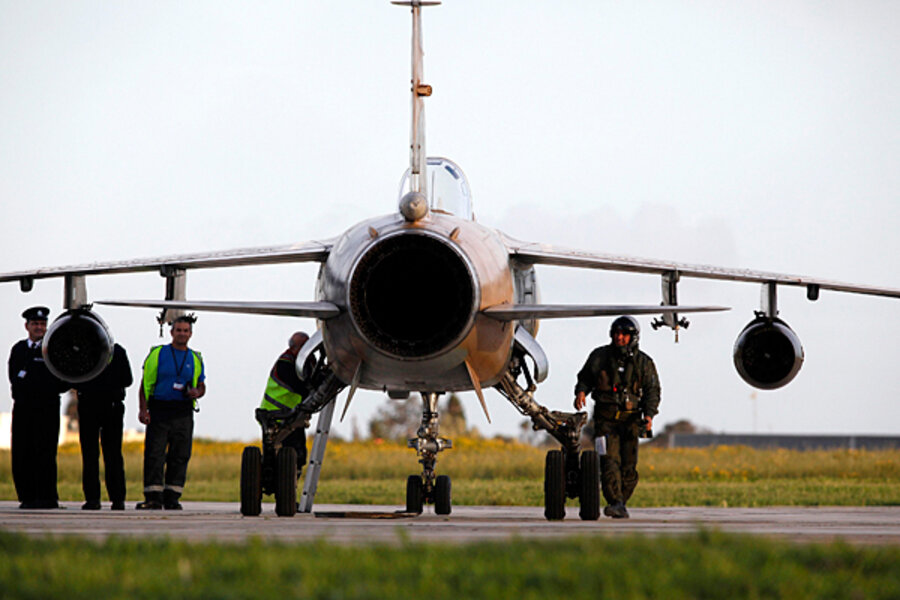One of the more frequently mentioned scenarios is to establish a “no fly” zone over Libya – an option that the White House says is under consideration. The idea would be to prevent Qaddafi from using aircraft to attack rebels or civilians.
But establishing a no-fly zone would be “challenging,” Gen. James Mattis, head of US Central Command, told Congress Tuesday. US forces would first “have to remove” Libyan air-defense capabilities, including difficult-to-detect antiaircraft missiles.
Also on Tuesday, Chairman of the Joint Chiefs of Staff Adm. Mike Mullen called such a no-fly operation “extraordinarily complex…. We’d have to work our way through doing it in a safe manner” in order to “not put ourselves in jeopardy.”
While the Libyan Air Force “is not exactly the Luftwaffe” – a reference to the formidable German air force of World War II – it does have air defenses, says Tom Donnelly, director of the Center for Defense Studies at the American Enterprise Institute.
But there are options short of an air war. US or NATO aircraft could conceivably “neutralize fixed wing [airplanes] relatively simply with a couple of well-placed craters on a runway,” says retired Col. Dwight Raymond of the Peacekeeping and Stability Operations Institute at the US Army War College in Carlisle, Pa. “You could put in those craters and not hurt anybody in the process,” he adds.
But Libyan helicopters, which could be used to shoot at civilian protesters, are more difficult to detect by aircraft patrolling no-fly zones, says Mr. Raymond.
Equally tricky are the diplomatic considerations surrounding the establishment of a no-fly zone. The Pentagon has already said that if a no-fly zone were to be established, it “would be more than just the US” enforcing it. Italy has said that it would allow the use of its bases, but only under the auspices of a United Nations resolution. Yet the chances of Russia and China supporting such a resolution are uncertain, says Richard Fontaine, an analyst with the Center for a New American Security.
Also unclear is whether Russia could “get comfortable” with the idea that NATO would likely lead such an endeavor. The United Kingdom has already pointed out that its bases in Cyprus could be used to help enforce a no-fly zone.
The point would be to try to contain Qaddafi’s forces and options. “You’re not so much trying to destroy perpetrators as you are to try to influence their decisionmaking process” and encourage them not to harm their people, says Raymond.
US forces are likely to debrief two Libyan fighter pilots who recently defected to Malta with their jets. “Those two would be fantastic sources of intelligence, especially if we’re trying to establish a no-fly zone,” says Raymond, who adds that they would also be able to provide information on the morale within the Libyan military.





